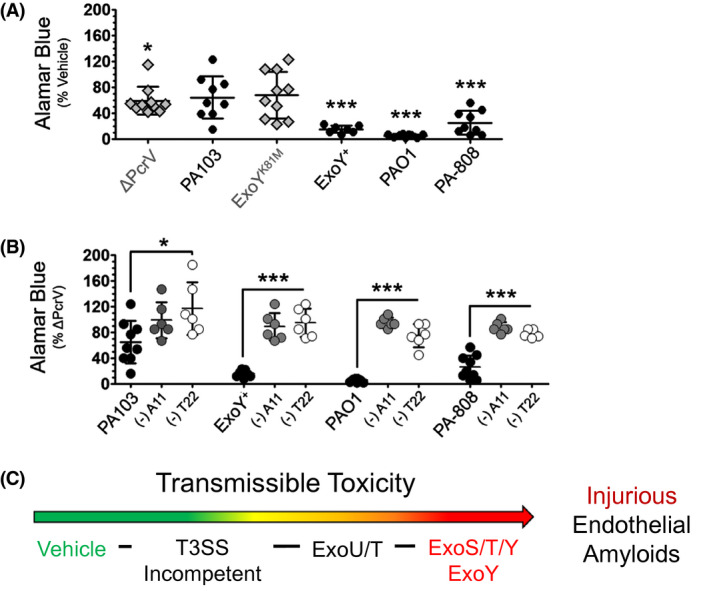Figure 4.

ExoY intoxication generates transmissible amyloids that abolish oxidative phosphorylation. Naïve PMVECs were treated with either filter‐sterilized infection supernatants or a vehicle control and cellular oxidation‐reduction status was measured after 24 hours via resozurin. To determine whether amyloids generated secondary to T3SS effector intoxication contribute to the effect, oligomeric amyloids (A11 Ab) and oligomeric tau (T22 Ab) were neutralized in samples of each infection‐derived supernatant and then, transferred to naïve PMVECs. Fluorescence was plotted (A) as normalized to the vehicle control; and (B) as normalized to treatment with T3SS‐incompetent ΔPcrV‐supernatant. n ≥ 6 (6‐13); 3‐6 technical replicates each, One‐way ANOVA with Tukey's posthoc; mean ± SD; *P < .05, **P < .01, ***P < .001. C, Schematic qualitatively ranks the virulence of transmissible amyloid‐mediated injury arising secondary to P aeruginosa infection of lung endothelial cells
